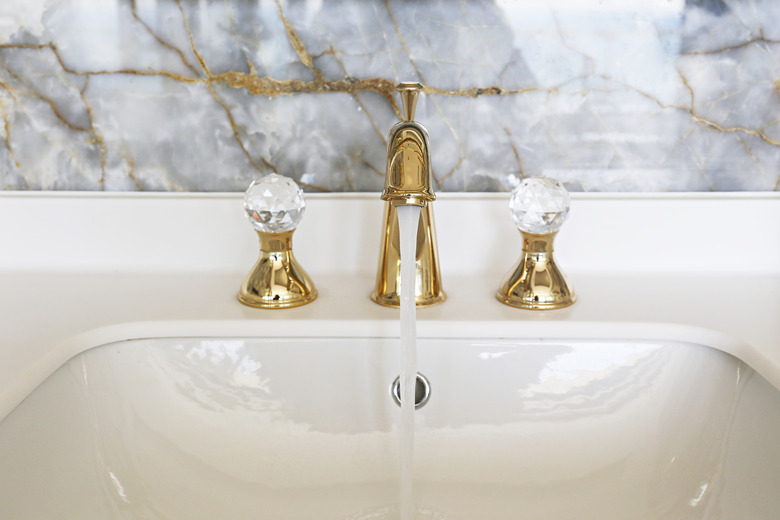Red Brass Vs. Yellow Brass
We may receive a commission on purchases made from links.
Brass is an alloy of copper, zinc, and other metals. The proportion of materials determines the color as well as heat and corrosion resistance. While there are a number of different combinations that are used to form brass alloys, two primary types, red brass and yellow brass, are used in a variety of applications, including doorknobs, bathroom faucets, valves, musical instruments, and artwork. Here's a quick look at the differences between red brass and yellow brass and a rundown of some of the many ways brass is used.
Red Brass
- 90-95 percent copper.
- Red/copper color.
- Excellent strength and corrosion resistance.
- More valuable due to high copper content.
Yellow Brass
- 70 percent copper.
- Less red, more yellow color.
- Somewhat less strong and corrosion resistant.
- Somewhat less valuable.
Combining Metals to Make Brass Alloys
Combining Metals to Make Brass Alloys
The main difference between red brass and yellow brass is the amount of copper used in making the alloy. Red brass closely resembles the reddish color of copper because it contains a larger percentage of the metal, up to 95 percent, while yellow brass generally has more zinc and less than 70 percent copper. Brass alloys may also contain small amounts of iron, lead, manganese, nickel, and/or tin.
Metal alloys, like brass, are made by melting the components together. When the alloy cools, it is a combined metal that may have enhanced properties, including hardness and corrosion resistance. Different metals may be combined with the copper and zinc when making brass, which changes the color and properties of the alloy. Common names and components for some brass alloys include:
- Red brass: 90-95 percent copper/5-10 percent zinc.
- Rose brass: 85 percent copper/15 percent zinc.
- Yellow brass: 70 percent copper/30 percent zinc.
- Cartridge brass: 67-70 percent copper/30-33 percent zinc plus traces of lead and iron.
- Muntz metal: 60 percent copper/40 percent zinc.
- German silver: 60 percent copper/25 percent zinc/15 percent nickel.
- Naval brass: 59 percent copper/40 percent zinc/1 percent tin plus traces of lead.
Making Brass Instruments
Making Brass Instruments
Brass is well known for its use in musical instruments, thus leading to the common name of "the brass section" in a band or orchestra. Trumpets, trombones, tubas, and French horns are all basically horns made of brass that use valves or slides to help change the sound and pitch of the players' vibrating lips and breath as they blow into the instruments.
These musical instruments use several brass alloys, ranging from yellow to rose to red brass. The darker, or redder, brass alloys make a heavier, darker sound, while yellow brass provides a brighter tone to the music. Thicker and thinner gauges as well as the tempering of the alloy during the manufacturing process also change the sound of an instrument.
Incorporating Brass in Décor and Art
Incorporating Brass in Décor and Art
Brass is used in the home, from doorknobs to bathroom fixtures to decorative items, like lamps and vases. The shiny yellow metal not only gleams like gold (or like copper in the case of red brass), but it also has antibacterial properties. Pathogens like MRSA, influenza, and coronaviruses die quicker on copper and copper alloys like brass than they do on stainless steel, glass, and plastic surfaces.
Using Brass in Manufacturing
Using Brass in Manufacturing
Harder than copper, more malleable than steel, and corrosion resistant, brass fittings are sturdy connectors, whether for plumbing or electrical. Tools and shell casings for rifles are also made of brass. Modern mechanical uses include bearings, gears, and radiator cores. Traditionally, brass was used for sheathing on ships, astrolabes, and barometers due to its corrosion resistance and nonmagnetic properties.
